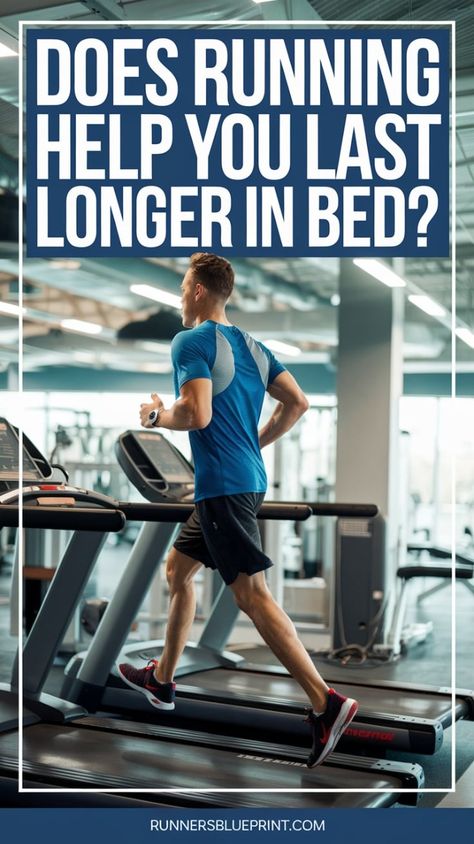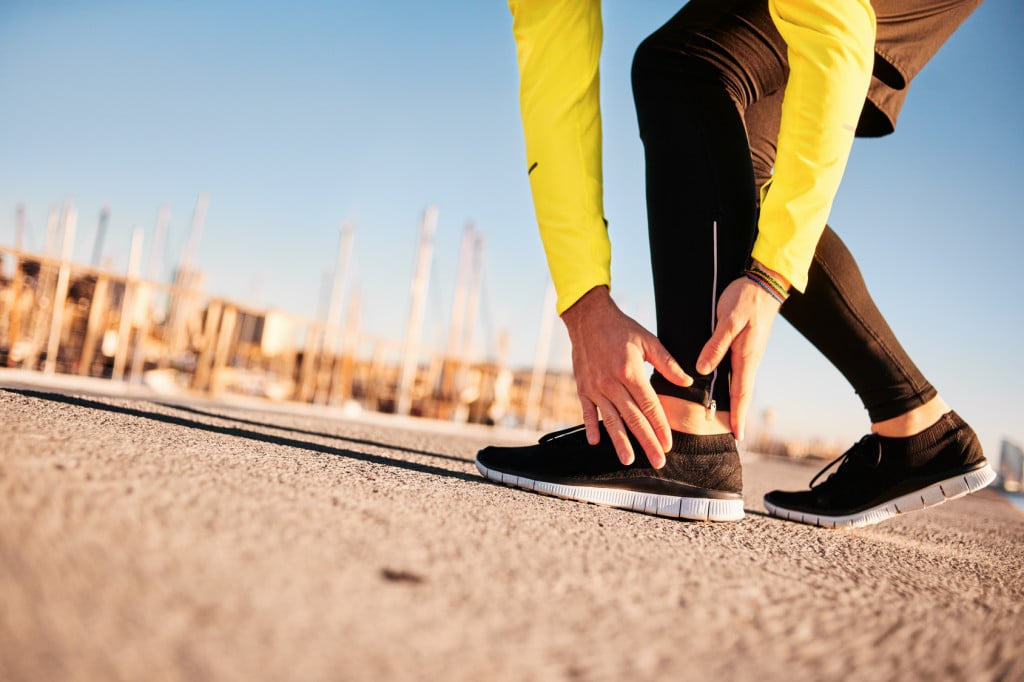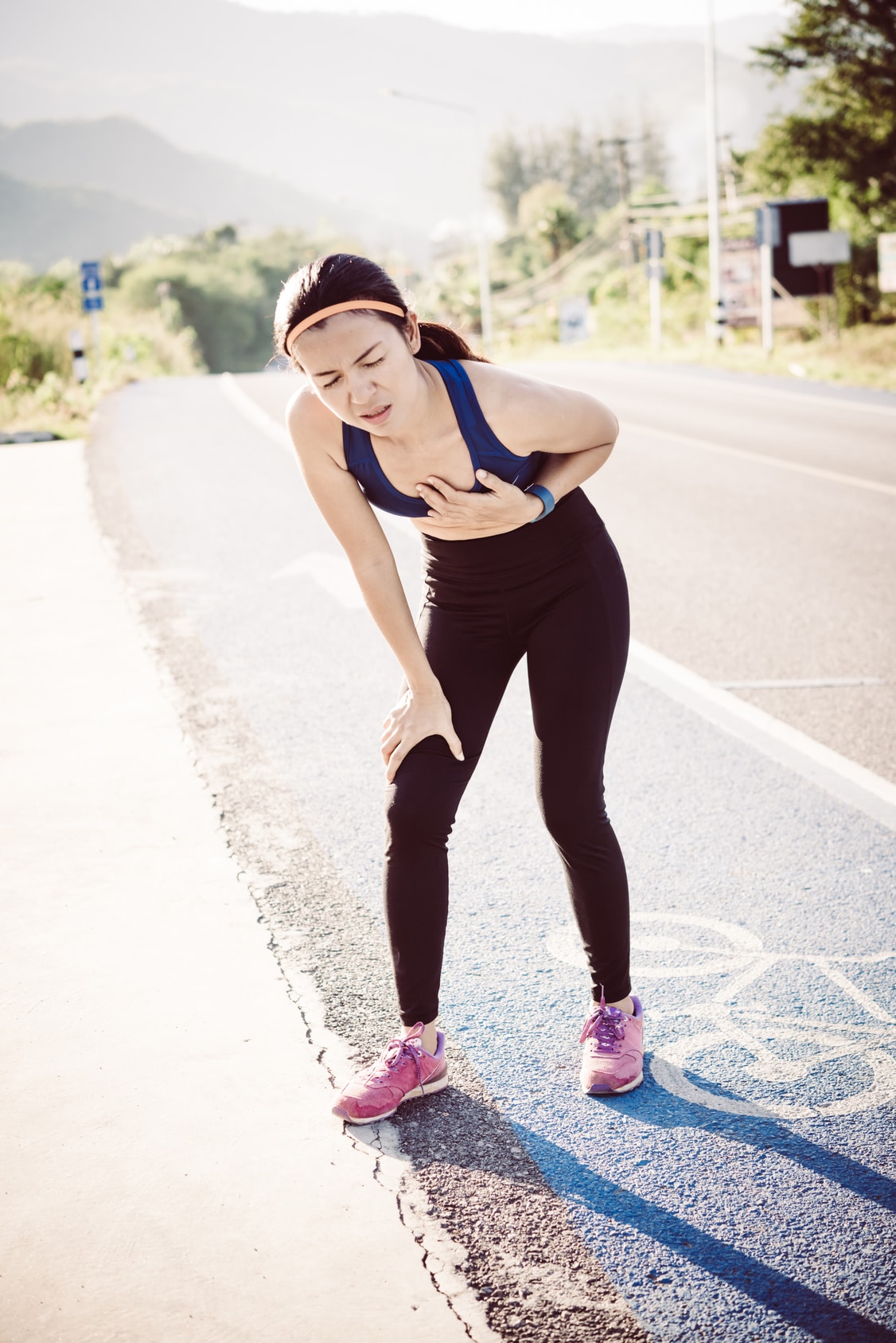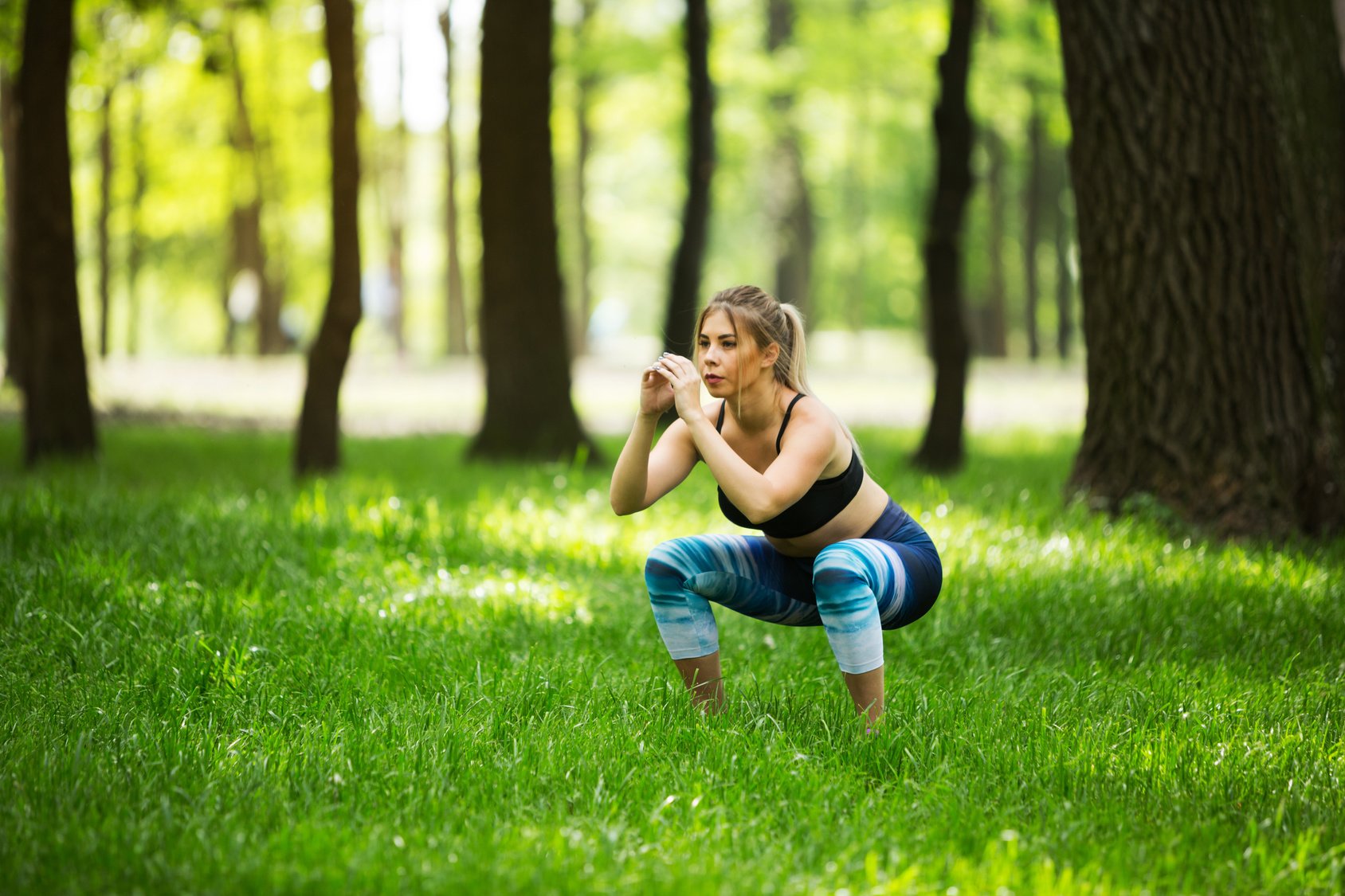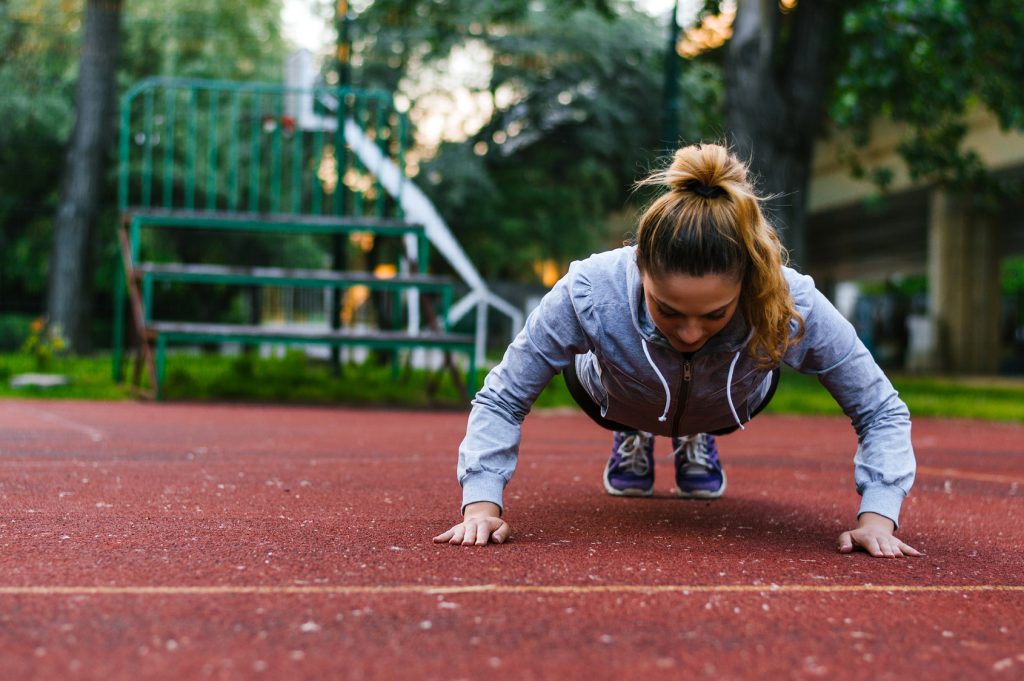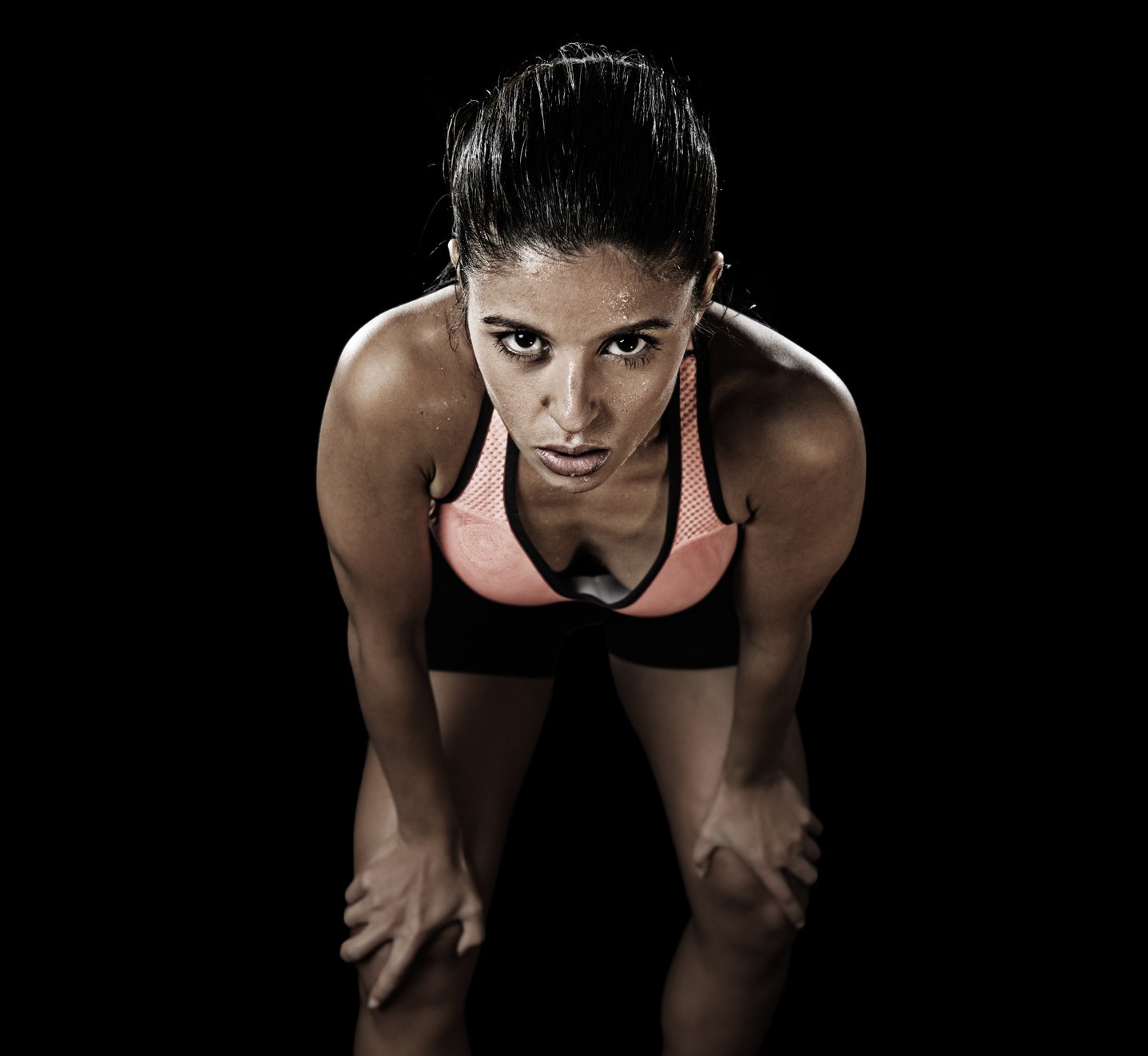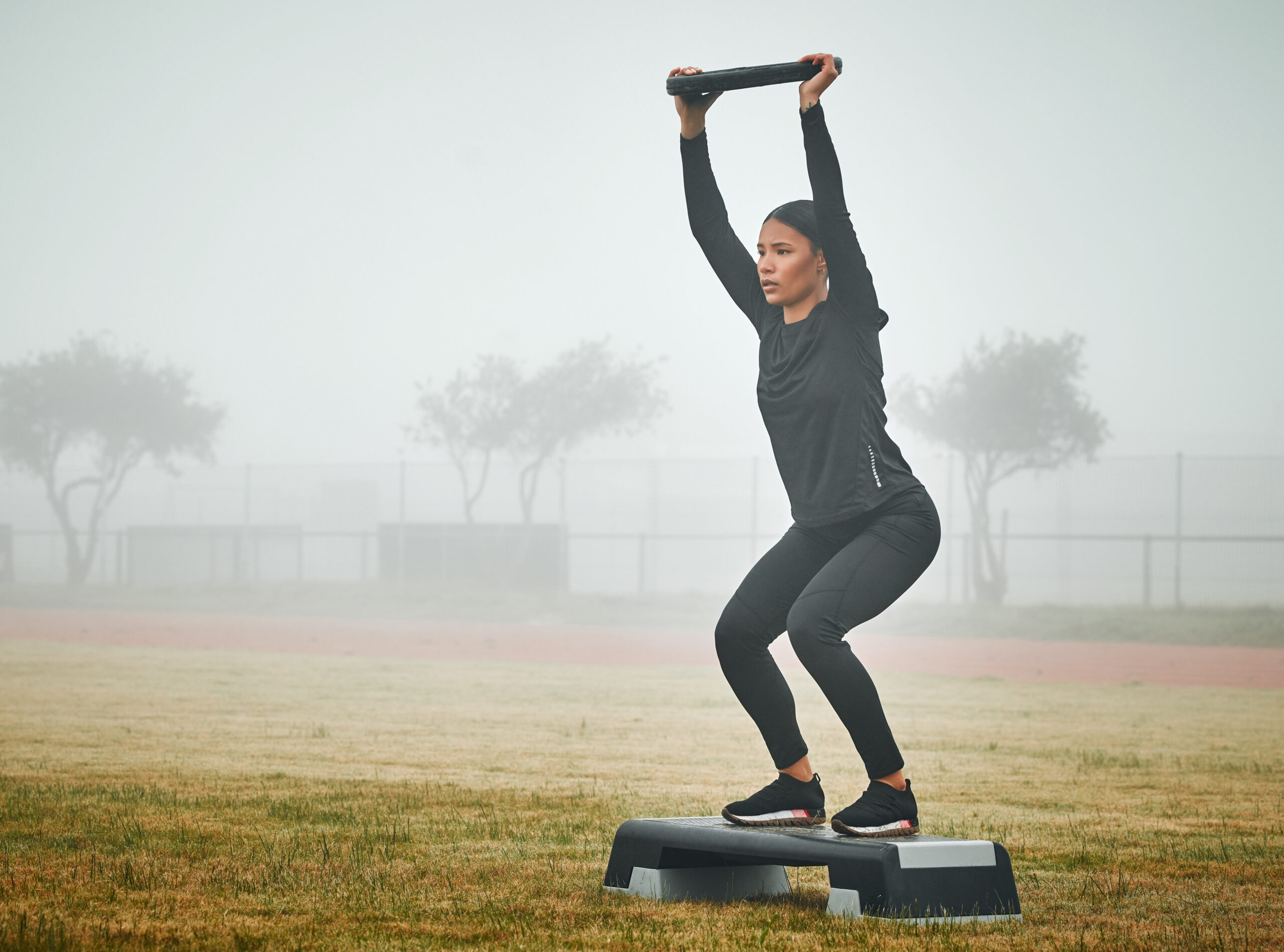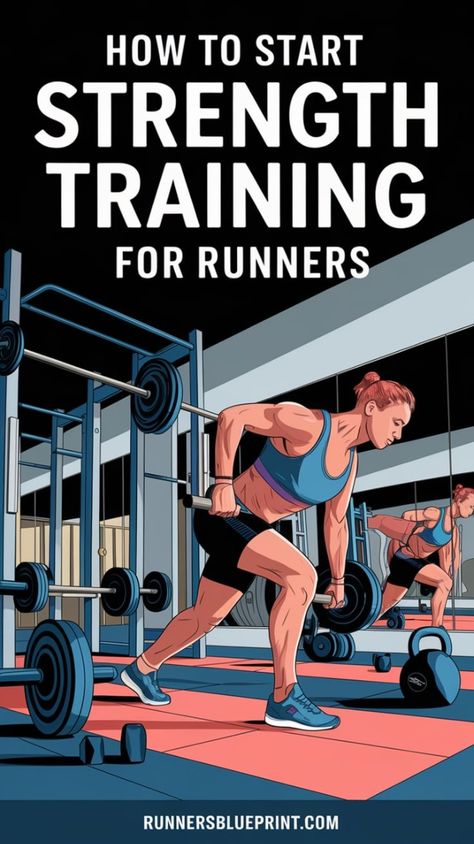Looking for the best HIIT running workouts for weight loss?
Then you have come to the right place.
Why HIIT is famous? Simple. Because HIIT running workouts works like a charm for dropping pounds and achieving a healthy weight.
But to get the most out of high intensity training for weight loss, you need to set up your training the right way.
That’s where today’s post comes in handy.
In this article, I’m sharing with you the basics of high-intensity interval training so you can become your own coach and design your own plan.
Here’s a summary of what you’re going to learn by the end of this beginners guide to high-intensity interval training:
- What is an HIIT running workout
- Why HIIT is effective for Weight Loss
- How long do HIIT workouts Should be?
- How to add HIIT running Workouts For Weight Loss into your Exercise plan
- When To Avoid High-intensity Interval Training For Weight Loss
- The Treadmill Shed HIIT Workout
- The Body Weight Incinerator HIIT Workout
- The Plyometric Feast HIIT Workout
- The Full Body HIIT Workout
- The Hill Sprints HIIT Workout
- The Weighted HIIT Sprints Workout
- The Tabata HIIT Workout
- The Stadium HIIT Workout
- The Jump Rope HIIT Workout
- The Staircase HIIT Workout
- The Medicine Ball HIIT Workout
- The HITT Sandbag Workout
- The 30-Minute HIIT Hotel Workout Routine
Brace yourself, you’ll learn a lot and shed a lot!
*Disclosure: This post may contain affiliate links that at no additional cost to you. I only recommend products I’d use myself and all opinions expressed here are our own.
What is An HIIT Workout?
High-intensity interval training, as the name suggests, consists of intervals of short periods of intense exercise, followed by recovery periods in a circuit or cycle.
During HIIT, you, basically, alternate intervals of all-out-effort performed at 90 to 99 percent of your maximum heart rate with a minimum resting period.
The interval portions may include fast-paced bodyweight exercise, sprinting, or any other challenging movement, whereas the recovery periods usually consist of either low-intensity exercise, such as jogging or walking at a slow pace, or complete rest.
The Effectiveness of HIIT for Weight Loss
Over the last few decades, plenty of published studies have proven, beyond the shadow of a doubt, the impact of interval training on fat loss.
In fact, most of the experiments revealed that HITT to be more effective at shedding the pounds, maintaining (even improving) muscle mass, and increasing fitness than long periods of low to moderate intensity cardio training.
Let’s check out a few:
Study I
Two weeks of high-intensity interval training improves aerobic capacity as much as six to eight weeks of endurance training, according to research presented at the American College of Sports Medicine Annual Meeting.
Study II
Not only do intervals burn mad calories during the workout, but also increase metabolism for more than 24 hours afterward, research shows.
This means that you keep burning calories at a higher rate long after you have finished exercising.
Study III
Overweight subjects doing HIIT style workouts for an 8-week period dropped more than two percent in body fat as compared to those who followed a moderate steady-state cardio routine on the treadmill, according to research out of the East Tennessee State University.
Study IV
Research out of Australia revealed that female subjects following a 20-minute interval routine, (consisting of 8-second sprints followed by 12-second rest periods), lost about six times more body fat than the group who opted for a 40-minute steady-state cardio training at 60 percent of maximum heart rate.
I hope by now you’re already getting the big picture.
Whether you’re looking to lose 10 pounds, 20 pounds, or even more, HIIT delivers.
How To Make HIIT Running Workouts Work For Weight Loss
The key to burning a lot of calories while doing high-intensity interval training lies in how hard you push yourself during the intense intervals.
As a rule, aim to train at roughly 90 percent of your max—this is what’s known as training in an anaerobic mode.
This is the equivalent of 8 to 9 on the rated perceived exertion scale.
How long does an HIIT running workout for weight loss Should Be?
Here’s more good news.
You don’t need a huge time commitment to get the most out of HIIT.
In fact, research has reported that even doing as little as 10 minutes of HIIT workouts can have a huge positive impact on health.
Individuals with insulin resistance risk, for example, can benefit from doing a HIIT workout. Running can help increase insulin sensitivity, specifically when you vary your speeds and intensity throughout a much shorter time. This will help your body use blood glucose more effectively, thus reducing blood sugar levels.
Here’s how to add HIIT workouts to your exercise plan:
- Two to three days of strength training per week
- Two to three HIIT workouts at 20 to 30 minutes.
- One long steady-state cardio day –45 minutes or longer.
Be Careful
If you’re a beginner and/or are out of shape, don’t go 100 percent all out at once.
Instead of performing intervals at near-maximum capacity, do fewer than you think at closer to 80 to 90 percent of maximum effort, then take plenty of rest between each round to let your body fully recover.
Don’t chew more than you can swallow—or else, you’re going to regret it.
What’s worst than regret?
Stopping training altogether because you got injured or burned out.
You don’t want that.
Additional source – How to run to lose belly fat?
When To Avoid High-intensity Interval Training For Weight Loss
If you’re a complete beginner with no fitness experience or recovering from an acute injury, HIIT is not for you (not yet until you pass the acute phase).
As a beginner, aim first to build your endurance and strength doing plenty of walks, jogs, and total body strength training.
This should be the foundation of your training.
Once you feel that your body is up to the task, start HIIT training but do it in a slow and gradual manner.
In case you’re dealing with an injury, let’s say shin splints, then take up HIIT once you’re pain-free and/or already have the green light from your doctor.
Don’t get too excited—or else, if you try to push through pain, you may make your injury worse.

The Best HIIT Workouts For Weight Loss
To jumpstart your HIIT program, I’ve compiled a short, but very effective, list of my favorite interval workouts for weight loss.
Pick one or two—or all of them—to add to your weekly training routine.
Just whatever you do, stay within your fitness level the entire time—that’s how you get fit (and slim) without getting hurt.
Remember to include at least one day of recovery between workouts as these routines are super challenging.
The rest is just detail.
HIIT Running Workout 1 – The Treadmill Shed Routine
Start the routine with a 5-minute jog to get your mind and body ready for the intense work ahead.
Then choose a treadmill speed that you can sustain for no more than 30 seconds.
You can also add a 4 percent incline for more intensity.
Next, perform eight to ten intervals for 30 seconds, followed by 90 seconds of recovery.
Make sure you push yourself during the interval, shooting for at least 8 to 9 RPM on a scale of 1 to 10.
Then slow it down to bring your breathing and heart rate back to normal.
Last up, finish the session with a 5-minute slow jog cool-down.
Then stretch your muscles.
HIIT Running Workout 2 – The Body Weight Incinerator
start your routine with a 5-minute slow to jog to warm up.
Then perform another five minute of dynamic routine just like this one.
Continue by performing 12 to 16 reps of the following exercises in the order shown for 30 minutes.
Take 10 seconds of rest between each exercise.
- Squats
- Sit-ups
- Push-ups
- Jumping jacks
- Long lunges
Rest for one to two minutes, then repeat the circuit for four to five times.
Once you’re done, perform this stretching routine as cool-down.
HIIT Non-Running Workout 3 – The Plyometric Feast
Following a 10-minute dynamic warm-up, complete the following seventy moves in order with no rest in between.
- Squat jumps – 20 reps
- Plyo push-ups (on your knees if you have to)—8 reps
- Jumping lunges—10 reps on each side
- Burpees – 15 reps
- Lateral lunge jump – 15 reps
Take a one-minute break between each round.
Shoot for eight to ten rounds.
HIIT Running Workout 4 – Hill Sprints
Hill sprints, also known as hill repetitions, are the most powerful form of sprints that there is.
They help you sculpt a killer core and lower body strength, Also, ward off leg injury because of the position of your body and the shorter stride.
Here’s how to get started.
Look around your neighborhood and find a hill with a steep slope that is at least 50 yards long.
The longer, the better.
begin your session with a warm-up, then sprint up the hill at 70 percent of your max effort.
Walk down for recovery and do no more than five sprints at about 80 percent of your maximum effort.
Finish the session with a slow five-minute jog on a flat surface, followed by a 15-minute static stretch for all of your major muscle groups—especially the calves, hamstrings, and the gluts.
Additional Resource – Here’s how to much to run to lose weight
HIIT Running Workout 5 – The Weighted Sprint
Adding weighted vests to your sprint workouts makes them more challenging, thereby increasing energy expenditure.
You’ll feel much lighter on your feet once you remove the vest.
Strap on a weighted vest—weighing no more than 10 pounds for starters—and perform your interval sprints on a track.
Don’t go full throttle on your first sessions.
Get your body familiar with the new workload, the, aim for heavier vests and more sprints,
And Keep pushing your body as hard as you can.
Additional Resource – Your guide to weighted vests for running.
HIIT Running Workout 6 – The Tabata Routine
Tabata inspired workouts have been dubbed the “4-minute fat-burning miracle workout” because they help you increase aerobic and anaerobic capacity, along with overall fitness level like nothing else.
To do Tabata training right, make it your goal to push as hard as possible for 20 seconds, rests for 10 seconds, then repeats this on-off pattern for a total eight times, taking four minutes to complete one Tabata round.
After a thorough warm-up, perform the following four rounds, aiming to complete the whole workout in less than 20 minutes.
High Knees
Assume an athletic position with feet hip-width apart, back flat and core activated.
Next, perform high knees by jumping from one foot to the other at the same time, bringing the knees up to waist level.
You can also bring your palm in front of your waist, attempt to touch your palm with your knees as quickly as possible.
Make sure you’re pumping your arms and landing on the balls of the feet as they run in place as fast as possible.
Continue for 20 seconds, rests for 10, and then repeats the cycle eight times.
Squats
Stand tall, feet hip-width apart, with most of the weight on the balls of the feet.
Next, while keeping the back flat, core engaged, and knees tracking over the toes, squat down, sitting back until the knees are bent at a 90 degrees angle.
The goal is to strengthen your glutes, not showing it off.
So make sure you don’t over curve your lower back.
Last up, press back up to standing position and repeats.
Continue for the full 20-second interval, then rests for 10 seconds, and repeat the cycle eight times.
Additional resource – How to measure body fat percentage
Burpees
Begin stands with feet hip-width apart, back flat, and core activated.
Next, squat, place your palms on the floor, then kick the feet back to end up in a full plank position, quickly hop the feet back into the squat, and finally explode up in the air, reaching the arms overhead.
Perform as many burpees as possible for 20 seconds, rests for 10 seconds, then repeat the whole cycle eight times.
Jumping Lunges
Assume a lunge position with the left foot forward, both knees bent at a 90-degree angle, with the right knee almost touching the floor.
Next, while keeping the torso straight and core engaged, have your client jump up as high possible, swapping leg position mid-air. immediately jump up back again to starting position and repeat.
Continue jump lunging for 20 seconds, then rests for 10 seconds, repeating the whole cycle eight times.

HIIT Non-Running Workout 7 – The Sleds Routine
Sled training is a grueling workout with a simple premise: you push the sled from point A to point B as fast and as hard as possible with good technique.
Here’s how to proceed.
Load a sled with two 45-pound plates on each side.
Next, push the sled for the given distance without stopping, pause, then push back to starting position.
As you move forward, keep a straight line from head to ankle throughout the exercise, with the power coming from the hips and legs.
To do that, press and drive the feet diagonally into the ground with each step they take.
Rest for one minute and repeat for five to seven more times.
Push the sled with perfect form at all times.
HIIT Running Workout 8 -The Stadium Routine
Feeling trapped in the gym?
Hit the stadium.
In fact, you can get a lung-busting, muscle-burning session only by using the nearby stadium as a gym.
Here is an interval stadium workout routine to help you get into the best shape ever.
Perform the following exercises back to back, taking a 30-second rest between each exercise.
Aim to complete two to three total rounds.
Sprints
Start at one end of the straightway section of the track, then sprint full effort for 100 meters.
Rest for 30-seconds, then sprint back to the starting position.
Stair sprints
Run up the steps as fast as possible while driving your knees up and pumping your arms quickly and powerfully to keep momentum.
Then briskly walk down to starting position.
Double-step run
Sprint up the stairs as fast as you can while striding powerfully enough to skip every other step.
Double-leg hops
Begin by standing facing a series of steps with feet shoulder-width apart.
Assume a slight squat position, with your upper body, align or lower than your lower body then jump up and forward onto the first step, and land softly, knees slightly bent.
Pause, and then jump onto the second step and so on.
Continue making your way up to the top of the stairs until you reach the last step, then turn around and slowly walk back down.
HIIT Workout 9 – The Jump Rope Routine
Jump rope is a crucial training part of many sports, including tennis players, boxers, runners, and martial artists.
It’s also very convenient.
All you need is a properly-sized jump rope, and there you go.
Here’s one of my favorite jump rope routines:
Forward jump (basic jump)
Swing the rope over your head and jumps over it with both feet on every rotation.
Make sure you’re not jumping too high, just high enough to clear the rope.
Continue for one to two minutes, then recover for 30 seconds before moving to the next exercise.
Alternate-foot Jump
Instead of hopping over the rope, alternate the feet as if running in place.
Stay on the balls of the feet the entire time.
Continue for one to two minutes to finish one round.
Side-to-side Jumps
While opting for the basic jump, jump a few inches from side to side, using both feet.
Continue for one minute to finish one round.
Double Jump
Jump high enough in the air, or swing it fast enough, to pass the rope under the feet twice before landing.
Continue for 30 to 60 seconds to complete one set.
Single Foot Hops
Start hopping over the jump rope with the right foot for 30 seconds, then switch to the left foot and repeat.
Be sure to switch sides without stopping.
Aim for one-minute hops on each foot.
Additional link – Slow running vs fast running for fat loss
HIIT Running Workout 10- The Staircase Routine
Stair climbing exercises tone the calves, quads, glutes, and other lower body muscles without putting too much stress on the joints since it has less impact on the body.
Perform each exercise for 30 seconds to one minute, try as many reps as possible with good form.
Rest for one to two minutes between each circuit and aim to repeat it two to three times.
Sprints
Start facing the bottom of the stairs.
Next, while keeping the chest up and back flat, sprint up using each step as fast as possible.
Make sure you’re pumping your arms by the sides and making contact with each step.
Then, walk down for recovery and repeat.
Mountain Climbers
Assume a plank position with the hands on the second step, arms straight, legs extended, and core engaged.
Next, bring the right knee to the chest as close as they can, return to the starting position, then switch sides.
Continues alternating legs, bringing one knee at a time to the chest as fast as possible without losing form for one minute to complete one set.
Skip a Step
Sprint up the stairs, jumping high enough to skip two, or three, steps at a time.
Last up; walk down for recovery and repeats.
Additional resource – Here’s how long does it take to lose 100 pounds.
Stairs Decline Push-ups
Begin facing away from the bottom of the staircase and then assume a plank position with hands on the floor slightly wider than shoulder-width, and feet on the second or third step.
while keeping your body straight, perform a push-up by bending the elbows and lowering the upper body to the floor, then push back up until arms are fully extended to complete one rep.
Squat Jumps
Start facing the stairs, lowers into a squat, then while engaging the core and using both feet, jump up to the next step, landing in a squat.
As soon as you land in the squat, have them hop up to the next step, and continue until they reach the top of the stairs.
Just pay attention if you’re dealing with any ankle pain.
Walk down for recovery and repeats for one minute to complete one set.
Hop-ups
Stand tall, feet slightly more than shoulder-width apart and core engaged.
hop up and down from the first or second stair for one full minute without stopping to complete one set.
Rest for one to two minutes then repeats the whole circuit two to three times.
Additional resource – Trx exercises for runners
HIIT Non-running Workout 11 – The Medicine Ball Routine
I love exercising with medicine balls.
They are fun, versatile, and challenge my body in ways that other workout routines can’t even come close.
Plus, med ball moves tend to be full-body exercises, instead of just an ab or a chest press, so they are really time efficient and enjoyable.
I typically prefer to use the Everlast medicine ball.
This brand comes in a variety of shapes, colors, and weights, and I love its textured surface, which ensures superior grip and handling ($50 – Get it Here).
If you are looking for durability, then get the Elite Power Medicine Ball.
This brand is perfectly balanced, bounces very well and it’s incredibly durable ($67 – Get it Here).
Another brand I love is the Nike Med Ball.
This one is mainly made with rubber and bounces very well, so it’s ideal for functional weight training ($25-100 – Get it Here).
Toe Touch
Begin by laying down on your back while holding a med ball in both hands, both legs raised and straight so they perpendicular to the ground.
Next, raise your torso and arms off the floor until the ball taps your toes, pause for a second, then slowly lower your torso down.
Make sure to keep your legs touching and in position the entire time.
Do 10 reps to complete one set.
Shoot for three sets.
Squat to Chest Pass
Start off by standing 3 to 5 feet from a wall with feet shoulder-width apart while holding the ball in hand at chest level
Next, to perform this exercise, drop down into a squat position, then explode up and toss the ball against the wall as hard as possible by pushing it outwards from your chest.
Then, seize the ball as it bounces back in one continuous action and moves into the next rep.
Then, repeat as fast as you can.
Do three sets of 16 reps each.
Suitcase Crunch
Lay on the floor on your back while holding a med ball, using both hands.
Make sure your arms are fully extended overhead.
Next, lift your torso, bend your right knee toward your chest then take the ball over your knee and toward your foot, pause for a moment, then gradually come back to the starting position.
Switch sides to complete one rep.
Do 8 reps to complete one set.
Aim for three sets.
Diagonal Chop
Assume an athletic position while holding a med ball at head height, hands on each side of the ball.
Next, while keeping your core activated and back straight, bring the ball down as hard as you can (imagine that you are chopping wood with the med ball), then bring it back up to the starting position.
Do 12 reps to complete one set.
Aim for three sets.
Overhead Slams
Stand tall feet shoulder-width apart, knees slightly bent, core engaged with a slam medicine ball held overhead.
Next, slam the ball down into the floor with as much power as possible.
Make sure to exhale during the slam and engage the core muscles.
Last up, pick up the med ball and lift it back to the starting position repeats.
Do 16 to 20 reps to complete one set.
Aim for five sets.
Medicine Ball Sit-up Throws
Start by laying down in a sit-up position on the floor with knees bent, facing a wall, or a partner.
Next, while holding the ball overhead with two hands crunch up and explosively throw the ball back to either against the wall or a receiver (a standing partner).
Last up, catch the med ball and repeats it.
Do 12 to 16 reps to complete one set.
Russian Twists
Begin by sitting on the ground with your knees slightly bent, back straight, and feet flat (easier) or raised up (more challenging).
That’s your starting position.
Next, while holding the med ball at chest level, lean back, engage your abs, then slowly rotate the ball around your mid-section to the right side, pause and tap the ball on the floor just outside of your right hip, then pull the ball back into your chest and repeat the motion on the other side to complete one rep.
Do 8 reps to complete one set.
Aim for three sets.
Bulgarian Split Squat with Medicine Ball
Hold a medicine ball in front of your chest with the top of the left foot on a bench behind you.
Your feet should be at least three feet apart.
Next, squat down as far as you can as you lower the ball toward the left thigh, pause for a moment, then push back up, lifting the ball above the right shoulder.
That’s one rep.
Do 10 reps on each side to complete one set.
Shoot for three sets.
Lunge to Rotation
Hold a medicine ball a few inches in front of your chest, then take a step forward into a lunge without letting the knee go over the toes.
Next, get deep into that lunge, then rotate your torso across your front leg, reaching the med ball to your right, pause for a moment, then reverse the movement back to starting position and repeats on the other side to complete one rep.
f you are looking for an explosive way to perform your medicine ball workouts, then you came to the right place.
Slam medicine balls exercises are an excellent way to increase explosive strength and power.
Here is a slam ball workout routine that will help you increase your range of motion and improve speed and explosiveness like nothing else.
Perpendicular Wall Ball Toss
Begin by standing about two to three away perpendicular to a wall, with the right hip closest to the wall and while holding a medicine ball in front of the waist.
Next, while engaging the core and extending the hips, throw the med ball toward the wall with as much force as possible for it to rebound back.
Catch the med ball and move immediately to the next rep.
Keep the back flat and chest up the entire time.
Shoot for 16 to 20 reps on each side to complete one set.
Medicine Ball Squat Throws Sprints
Stand tall, feet hip-width apart, while holding a med ball at chest level.
Squat down, then explode forward by extending both arms and legs and throwing the med ball forward with both hands.
As soon as the ball hits the floor, sprint forward until you catch up with the rolling ball, then repeat the squat-throw-chase eight to ten times to complete one set.
HIIT Non-Running Workout 12 – The Sandbag Routine
Sandbag training is another efficient way to do high-intensity interval training for weight loss.
To get started, you’ll need a bag.
You can either buy one, or make your own by following these steps:
- First of all: gather your materials. To make a sandbag you will need a duffle bag (make sure it’s resilient and can withstand abuse), a builder’s sandbag, sand (duh!), duct tape, and zip ties.
- Next, fill the builder’s bag with sand, wrap the top tightly then seal it tight with duct tape, and zip ties
- Finally, add the builder’s bag of sand directly in the duffel bag, then zip it shut. Make sure to leave enough wiggle room inside of the bag for the sand to splatter around.
Now put the bag to work, and do this powerful bag training routine to help you become the best runner (and athlete) you can be.
If you don’t want to make your own sandbag, then there are plenty of awesome commercial specialty sandbags designed with hardcore training in mind.
Perform the following workout as a circuit, and do the exercises in the order shown, performing as many reps as you can with good form.
Shoot for at least three complete sets of the circuit.
Sandbag Deadlift
Begin by standing with your feet right next to the bag, then grip the parallel handles or the material of the bag.
Next, tuck your toes under the bag, keep a neutral spine, with knees slightly bent, then take the slack out of the bag, and stand up straight, pulling the sandbag up as you lift your back.
Make sure to keep the sandbag close to your legs throughout the lifting motion.
Your back should be straight the entire time—never round your lower back when you pick up or lower the bag.
This is the recipe for lower back pain or herniation.
Last up, push your hips back and slowly return to starting position.
That’s one rep.
Sandbag Power Clean
Begin by standing behind the bag, feet parallel, and at hip-width.
Next, while keeping the sandbag closer to your shins, and knee slightly bent, bend over and pick up the bag by the side hands, lift it from the ground, and then explosively pull it upward by extending your knees and hips.
Next, and in one fluid movement, descend into a squat, then uncurl the sandbag and take it down to the floor returning to starting position.
That’s one rep.
Sandbag Rotational Lunge
Begin by grabbing the handles of the sandbag in each hand so that your palms are facing each other.
Next, while standing tall with feet together and sandbag to knee height, step your right leg forward, lunge, then bring the sandbag over your front leg’s knee and rotate through your waist.
Make sure to keep your back flat and core engaged the entire time – allow for no rounding forward, especially as you rotate with the sandbag.
Last up, while keeping your balance, push back to starting position, and switch sides to complete one rep.
Sandbag Front Squat
Start with feet shoulder-width apart, with toes slightly turned out, then clean the bag to the front position.
Next, push your hips back and squat down until your thighs are parallel to the ground, then drive the hips back upwards and press back to standing.
Squat in a slow and controlled manner and work your hamstrings and glutes as hard as you can.
Make sure to keep your knees tracking over your toes, knees in line with the feet, your elbows tight and body upright the entire time.
Thrusters
stand with your feet shoulder-width apart, back straight and knees slightly bent, then grab a hold of the bag, pick it up and hold it at shoulder height.
Next, while keeping the weight at chest heights the entire time, squat down, pause for a moment, then stand back up and push press the sandbag overhead until your arms are almost locked out.
Last up, return the weight to the chest and repeat the movement to complete one rep.
Around The World
Stand with your feet shoulder-width apart, and hold a sandbag in front of you.
Next, pivot to your right and use your whole body to swing the bag quickly over and in a circle over your head to the left side.
Make sure to generate enough momentum and to keep your elbows in tight to prevent shoulder injury.
Instead of slowing down use your arms, legs, and core to swing the sandbag back to its original position, and complete one rep.
Repeat for 8 reps to complete one set.
HIIT Non-Running Workout 13 -The Hotel Routine
Traveling a lot and are afraid to miss your own HIIT workouts for weight loss?
This routine will have you covered as it will help keep your body in check when on the road.
I came up with this workout while in Kuala Lumpur for a short vacation.
I stayed in one of these four start hotel rooms with some fantastic facilities (and it wasn’t that expensive).
The workout consists of eight exercises, and the total workout is 40 minutes routine (including the 5 minutes warm-up and cooldown).
This routine will raise your heart rate, burns mad calories, builds muscle, and most importantly—challenges you physically and mentally.
Rows with Luggage
Stand with your feet hip-width apart while holding a suitcase horizontally by the ends, knees bent.
Next, while keeping the back flat, lean forward, hinge at the hips, then pull the luggage to your chest, driving the elbows straight back next to your ribs and drawing the shoulder blades together.
Hold for a moment, then lower it back down.
Repeat for 12 to 15 times.
Pushups
Assume a plank position, core engaged, tailbone tucked in, and fingers spread wide.
Next, while engaging the core and keeping the back flat, bend your arms and lower down until your chest almost touches the ground, then press back up.
Do ten reps.
Luggage Overhead Presses
Begin standing with your feet hip-width apart with the luggage at chest or shoulder height—as in a front squat.
While engaging the core and keeping the back flat, press the luggage upwards and above your head.
Make sure your arms go to full extension.
Keep your head slightly in front of the arms at this point of the extension.
Chair Dips
Sit on a chair then grip the edge with both hands, knuckles pointing forward.
Next, slide your bottom off the chair just far enough that your butt clears the edge of the chair, then hold yourself with arms straight.
Slowly lower your body until your elbows are bent 45 and 90 degrees, then raise yourself up. Just make sure your elbows are pointing directly beneath you, not out to the side.
Planks/sphinx
Begin on the floor on your hands and knees.
Next, bend your elbows 90 degrees and lower your forearms to the floor with the elbows positioned under your shoulders and hand shoulders width apart.
Make sure your elbows are directly beneath your shoulders and that your body is forming a straight line from head to ankles.
Hold the position for as long as you can.
Shoot for one to two minutes hold



